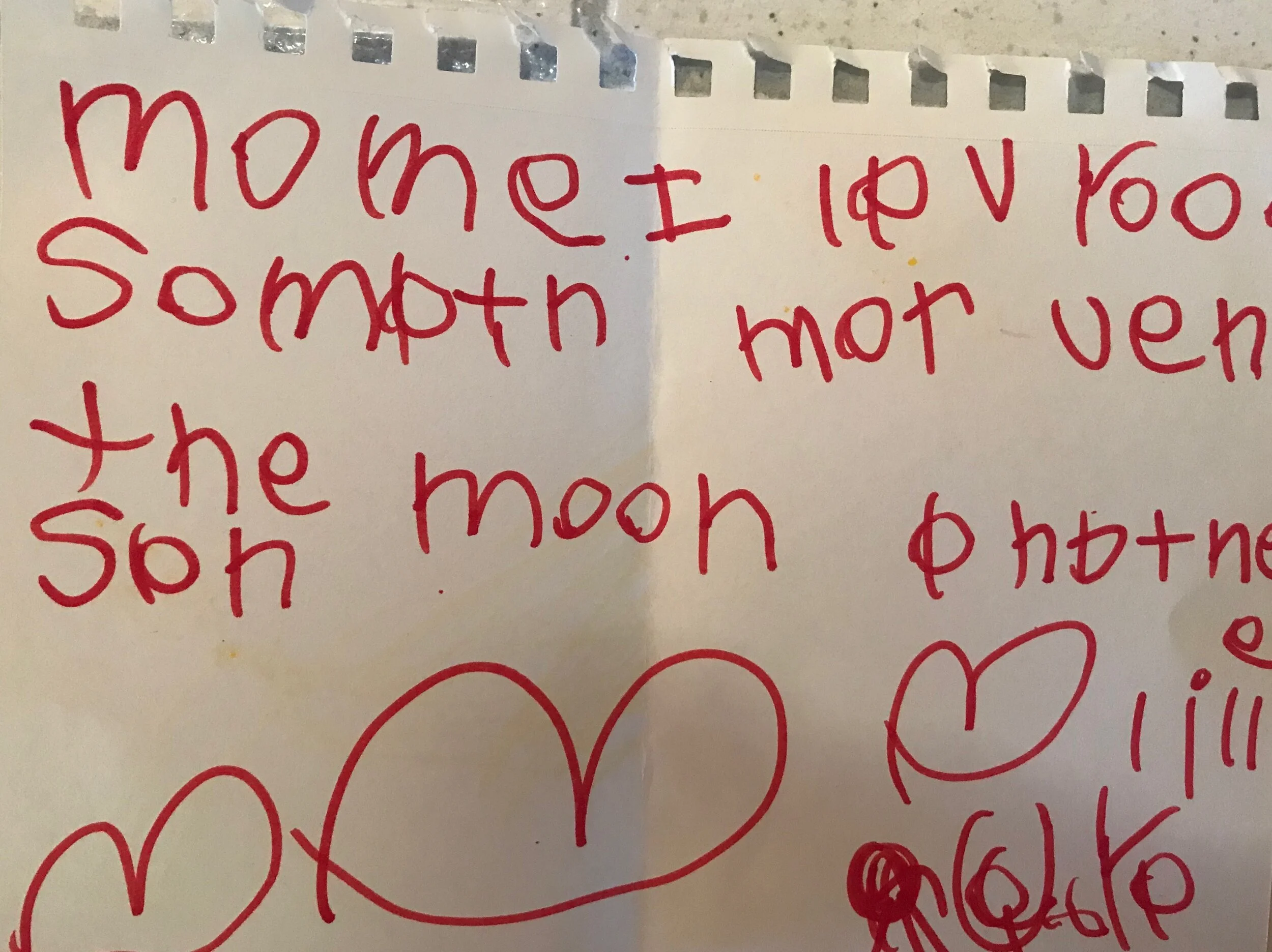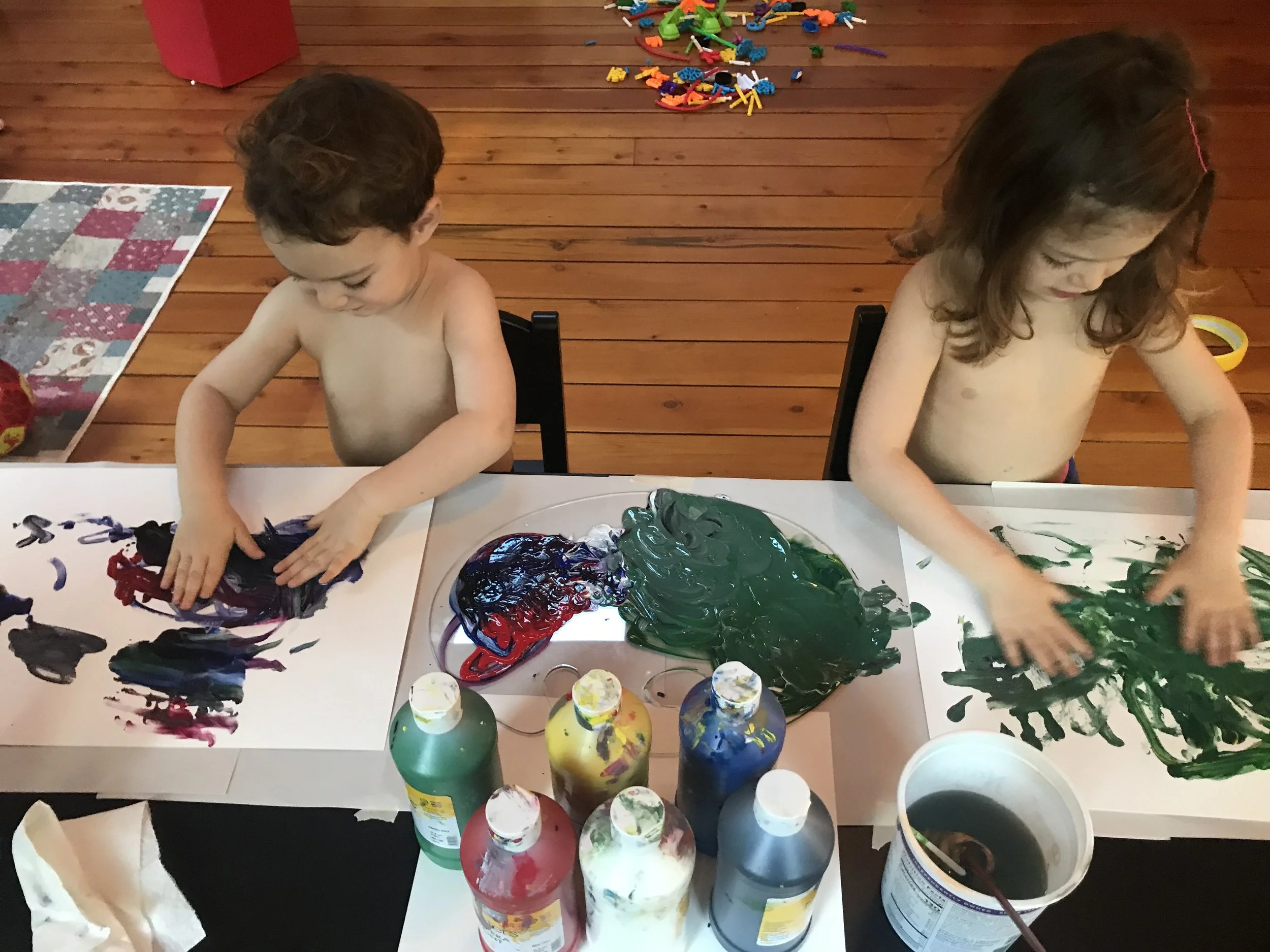Carrying learning with you: homeschooling a 6 and 4 year old
It has been a while since I wrote. My nomadic days seemed to be temporarily over. We found our home base, named it ‘the bird house’, and settled in for the winter. But I am discovering the other side of nomadism, that of the root. Mobility is the usual attribute given to being nomadic - it seems all about movement and being on the move. But it is equally about being rooted, and you have to root very well to be able to shift so often. You have to be able to empty your reserves and then set them up again, and do that again and again and again. So now are rooting a bit more, but the no less nomad.
Our bird house sits on the edge of a forest, at the tip of Marrowstone Island, which is at the end of the Pacific Northwest in America. We have two acres, a house, a cabin and a barn. We spent eight weeks in the one room cabin while renovating our house. Then we moved in. Its been three months now and the effect has been palpably good. Our home is simple, minimally furnished, basic, with emphasis on things like maple wood floors, radiant heat and excellent mattresses. We all find our nooks and spaces. The land is often busy with deer, sometimes a coyote. We have bird feeders next to our windows and watch hummingbirds swim in the air. Woodpeckers delve into our trees. It is very quiet, incredibly private and remote, yet within twenty minutes of people and stuff and resources. We work the land, playing and creating. It is rustic, chopping wood, manual labor, electricity outages and storms. It is supremely safe and we feel contained in a vessel. The bird house has proven to be an optimal roost for us.
And soon we fly off, close it down, and head to Turkey, Switzerland and Italy. We have visions and ideas, plans to explore and locate another base. We feel excited to go and joyful to come back. After so long of not having a base I can feel the ease of knowing we have a place to return to when we need it. In a real sense we have put down roots. I have made a friend, people recognize us, my children are enrolled in some incredible home school enrichment programs. There is a familiarity, and there is the constant change that evolves as we shape our land. In many ways the nomadic spirit continues. We have almost no storage space and like it that way. Accumulation is present but equally is letting go. We are designing our life around a value of being able to move, of having that flexibility. The wings and roots, both, that is what we seek to sustain.
A crucial necessity in all of this is homeschool. I have a legal responsibility to educate them - in Washington state this kicks in at age eight. I have a deep inspiration and instinct to want to nourish their growth. For me this is what home school is, it is an owning of that instinct to nourish in all its variety. It is what home always was, a place to nourish and teach and grow.
Part of the fortune of our chosen roost is the school options around us. It is very rare to have home school programs that are not Christian in the US, and there is a few around us. We use Maple Wood, a home school enrichment program, run by one amazing teacher, that is drop off for five hours, twice a week if we wish. There are no desks in their simple space, a hike every morning, experiential, hands on learning with a different theme every month. This has offered Ruya the chance to handle life on her own for a few hours, and for Aziz and I to have some one on one time. Eventually it will offer me five hours of me time, which is a complete rarity. Home schooling means my alone time is alot less, almost non existent. Although as my children grow increasingly we all take time working on our own projects. Home school also means learning to be self-directed and focus on a project in the home space. We all have stuff we work on and create the space to facilitate that. We have boards to post notes on, personal work spaces, materials and a constant interaction of nurturing each other’s ideas. Home school is not about kids learning, it is about the family learning together.
We also use OPHC a once weekly state funded program, which parents have to be onsite for. From this we get access to a decent fund of money for curriculum material, a few classes that rotate, social time for me and the children to exchange ideas and listen into what other home school families are doing. The biggest gain for me has been the requirement of a monthly report on what we are doing. Having to submit this report to our supervising teacher makes me track what I am doing across four subjects: Language arts, Math, Science and Social studies. I don’t keep the reports post submittal but the act of writing them up gives me a frame. This structure has been very useful for me to see what I am doing, and quieten the anxiety that I am not doing enough.
Generally less is more. Just like in the school systems it is very easy to get into an attitude of overfeeding information. The curriculums have a set pile of stuff you think you need to get through, and whilst a bit further away the pressure of matching societal benchmarks is very present. But as with anything there are cleverer and more facile ways of doing something. Part of the exploration is experimenting with different approaches and finding ones that work best and most optimally. I want less lesson time and more free wheeling creative with a purpose time. This means teaching material, as much as possible, in a way that requires less work and more insight. So on average we currently do a formal lesson straight after breakfast six days a week. I don’t take holidays on a calendar, time off emerges sporadically depending on our situation (like when I am attending lectures for ten days in Switzerland). This is much better overall, learning is continuous and what is learned doesn’t have to be relaid after a huge break. Every week, usually on the weekend, I plan our classes. I rotate between math and language each morning, and we dropped into a habit of doing history on Saturday morning’s. I do science informally, meaning I do it in the daily life: we read, do experiments, study geology, watch birds, make volcanos and so on. Right now Ruya who is six gets the class each morning. Aziz who is four has started learning to read and I am finding the right spot for him to do this, eventually within the same language period as Ruya. He sits in on all the learning, as much as he wants to, so he is very engaged.
The routine adapts as our needs change but in its basic structure it works well. Main lesson after breakfast gets it done early, with a happy tummy and an already sitting posture. It takes about half an hour to an hour depending on Ruya. Right now she is reading through the magic treehouse series, and I have a collection of books for her to choose from as she ends one. Reading is followed by workbook exercises from the DK series (also known as the Carol Vorderman series). This is a UK collection of workbooks that suits me well. Each page has an exercise on a concept, its pretty fun mostly to do, nicely formatted and easy to navigate. I can track how I am doing in following a grade’s curriculum just by glancing through the index. We use the same books for math, along with an Oak Meadows curriculum for this year. There are many math curriculums out there and we will explore as we go, but our inherent premise is to match Ruya’s learning style with a meta approach to math. In time we plan to bring in weekly tutoring since Math is not my niche. For social studies we are doing history and working through five ancient civilizations. Next I will do the story of the world curriculum, which is a more extensive study of the developing cultures. I place emphasis on mythology and fairy tales. It is the basis of imagination and the psyche, so we enter into the world of the gods every day.
One of the biggest gains of home schooling is I can adapt to the child’s pace. Ruya is reading at grade two level right now and a lot of our curriculum is grade two level of more. It isn’t about pushing her to be advanced more a flexibility in not having to stick to one grade level or structure. The home school classes she attends are multi age, following a similar concept of not letting age define learning content. This works best when there is an overarching meta theme.
Right now our meta theme is time, an archetype so it is ever giving in learning potential. Time can never be gotten or completely taught, it is such a vast concept. Right now we are exploring it in three parts. Kronos time which is temporal so I am teaching them to read a clock, learn the days of the week, months and calendars, seasonal cycles, phases of the moon etc. It is time that can be perceived by the senses, internal and external facts. Kairos time: the moment when psyche and matter meet in a synchronicity, also known as a fortunate or magical moment, an opportune time, or having the right timing. I am slowly bringing in the concept that events happen in time and some times are more opportune than others. We have to wait for the right time and jump when the moment is ripe. We can intuit this so it brings in the attitude of feeling the past and future as a rhythm with purpose. Then there is Aion time, the deep concept of timelessness, that which time emerges from, the time before time and eternal time. It also rules the time of aeons, huge chunks of time that are almost inconceivable. Right now we touch this in our fairy tales and discussions about what happens after death, about the soul, the dreamtime, psyche and the inner world.
I am not sure what theme will emerge next but we will let it be shaped by what my curriculums are throwing up and where we are. The beauty of shifting every year for a time is we get to adapt our learning under uncertain conditions. This makes it a lot more creative and tests me to refine what I am doing.
So far home school is vibrant, intense, super demanding and life enhancing. I am learning so much, my relationships with the children are exposed to tests of discipline, experiences of us both failing and succeeding and deepening commitment to each other. It has made education something we can own, not something that happens somewhere else, like in that school building. We get to carry learning, the attitude of learning, with us wherever we go.





